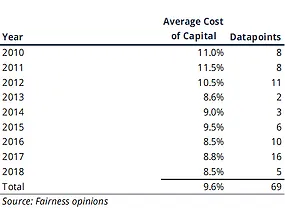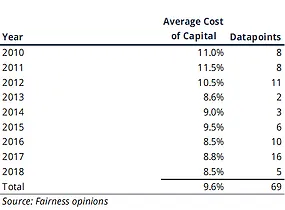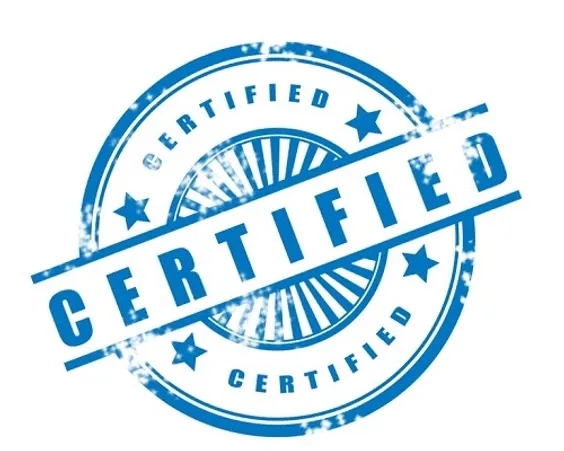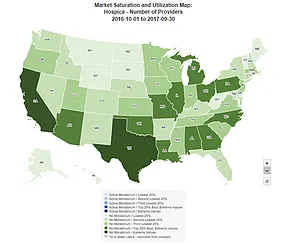Healthcare Industry Cost of Capital: Does it Vary by Segment?
Pharmacy came in the lowest, which was primarily due to the fact that one of the three data points was CVS, which is both the largest and had the lowest selected cost of capital. Tied for highest were medical transportation and specialty outpatient facilities, which may be is influenced by three older deals with high cost of capital estimates. The two more recent specialty outpatient deals actually had cost of capital estimates of 7.0% and 7.5% respectively.
Overall, there isn't much spread between segments, and the outliers seem to be explained better by other factors. Size, for example, clearly has a significant impact. We've previously discussed discussed the impact of size on valuation using a different data set.
Even timing may have a larger impact, as cost of capital estimates have decreased over the past several years.
Shoot us an email if you want to take a look at the full workbook.















